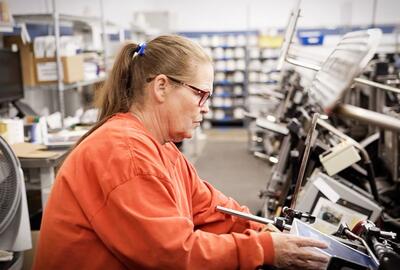Unemployment Rate Ticks Up
Jobs Growth
The monthly jobs report registered the addition of 73,000 new jobs in July, following significant restatements of the prior two months. The change in total nonfarm payroll employment for May was revised down by 125,000, from 144,000 to 19,000; the June figure was revised down by 133,000, from 147,000 to 14,000. Based on these revisions, combined May and June payrolls were reported to be 258,000 lower than previously reported.
Top Industries
In line with recent trends, the highest hiring activity for July was reported in healthcare and social assistance, while the federal government sector continued to lose jobs.
Unemployment
The unemployment rate shifted up in the most recent month, from 4.1% in June to 4.2% in July.
Wages
Hourly compensation rose in July by 0.3%, bringing average hourly earnings over the past 12-month period to 3.9%.
Work Week
Weekly hours shifted up in July, from 34.2 hours to 34.3.
Temporary Job Trends
Employment in the temp sector continued its downward trajectory in July, recording a loss of 4,400 positions.
What Does It All Mean?
For many months, predictions of doom and gloom have hammered the economy, despite continued resiliency in the labor market, both in the number of jobs created each month and the steadiness of a healthy unemployment rate. This month, startling downward revisions to recent reports of employment expansion by the Bureau of Labor Statistics (BLS) raised questions about two things: the momentum of economic growth and the level of confidence in the BLS numbers.
Employment numbers are often revised after initial reports are filed, sometimes up, sometimes down. That is nothing new. What is disturbing this month is the size of the adjustments for May and June. Based on the revised activity numbers, labor market growth over the past two months is far less than earlier reported. Whether that is the start of a sustained trend or an anomaly is yet to be revealed. As a result, the level of uncertainty about the direction and health of the economy has ratcheted higher.
Even with a healthy 3.0% rate of GDP growth for the second quarter, these other concerns translate to hesitancy on the part of employers and business leaders to pursue growth plans. In the continuing wait for interest rates to move lower, investment strategies remain on the shelf and hiring plans remain unfulfilled.
During this “wait-and-see” period of uncertainty, the prediction pendulum continues to swing from either a surge in growth or the start of a slow downward slide. Both employers and workers can take advantage of the lull to identify knowledge gaps, investigate the opportunities posed by AI, and focus on skill building. That kind of prep work will be beneficial to all once the veil is lifted from the economic outlook.
Sources: U.S. Bureau of Labor Statistics, Staffing Industry Analysts, NBC News, CNBC, USA Today, Bloomberg, AP, The Wall Street Journal, FOX, The New York Times






